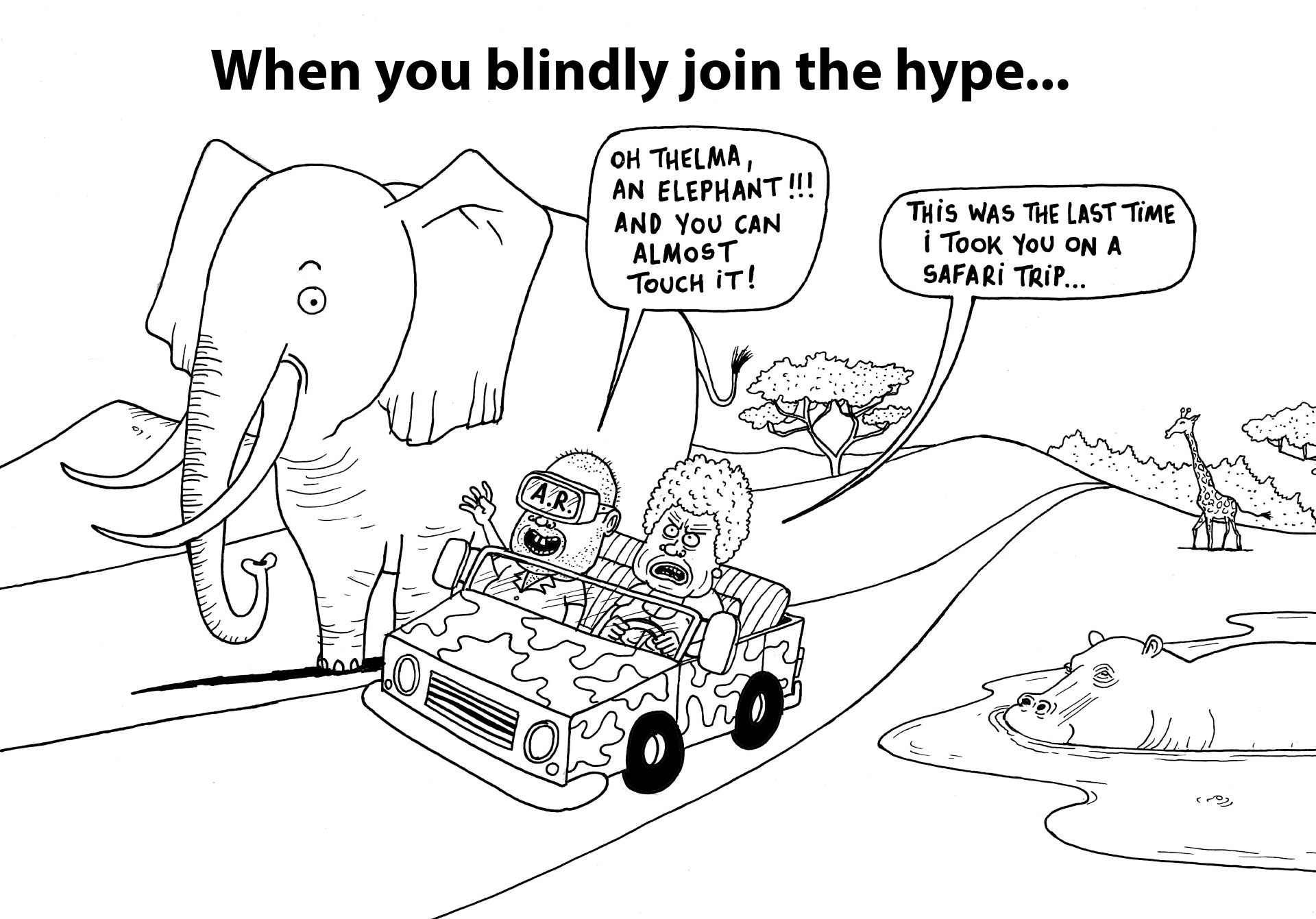Anyone who’s being active in the business world over the past few decades has witnessed the constant introduction of numerous new technologies. These innovations are arriving at an ever-increasing pace, with each one promising a bigger impact than the last. A question we frequently hear is: How do you deal with these hypes, especially now that it is clear many technologies do not live up to their promises?
A year ago David Johnston (Principal data scientist at ThoughtWorks) posted his evaluation of the tech hypes of the last decade.
One can debate over how to classify individual tech hypes, but one thing is clear: very few technologies live up to their expectations. However, this does not mean that such an overestimated technology cannot have a very significant impact in specific domains or industries.
When talking about tech hypes today, many refer to the Gartner Hype Cycle for emerging technologies (first published in 1995, see graph below) as a model to describe the evolution of technologies. This model describes the evolution of the popularity of the technology, defining distinct phases: Technology Trigger, Peak of inflated expectations, Trough of disillusionment and Plateau of productivity.
Back in 2016 venture capitalist Michael Mullany posted an article on his effort to retroactively check the correctness of the Hype Cycle Model. His eight lessons are very interesting literature for anyone who has to make decisions on technology. His overall conclusion: “What I take away from my analysis of these Hype Cycles is not just how difficult it is to make predictions, and how much wasted effort goes into technologies that doesn't tend to work, but also how exciting and wondrous is the progress that we've made in technology”.
So, how do you decide whether to adopt a new technology ?
Technology is just an enabler
Do not focus on the technology, it is only an enabler. Focus instead on what you want to achieve. For instance improving the customer or employee experience or boosting productivity. Several technologies may be able to provide similar results. If a technology offers a unique advantage, it’s worth considering but remain critical.
Seek reliable data
Do not decide based on only assumptions. It is inherent on new technologies that many things are ‘unknown’ or not proven yet. That is what the marketing departments of the technology and consulting companies make use of to stimulate FOMO (fear of missing out). Instead, seek reliable data for your specific use case: Is it more cost efficient? Is the quality better? Is it faster? Avoid relying on magazines and success stories, as they typically highlight only the successes, not the failures (if at all anyone will admit a failure in that phase).
However, failures will teach you the most about the limitations of a new technology. While new technologies will bring certain advantages, they usually come with disadvantages as well. In certain use cases, the advantage may completely outweigh the disadvantages, but in others, the reverse might be true. If you do not want to wait for more data on the disadvantages, you can try to better understand the technology. Consultants or salespeople may overwhelm you with difficult explanations, but if they cannot explain the technology in a simple way, they probably do not understand it well enough themselves and should not be considered reliable sources. A useful approach to gain clarity is to apply the "5 Whys" method, commonly used in root cause analysis, by asking why and how iteratively. The better you understand how a technology works, the more effectively you will be able to identify potential challenges or disadvantages in a specific use case.
Every business is unique
Once you have concluded that a technology can be instrumental in achieving your business goals, it can be very beneficial to do some small scale experiments or proof of concepts to get more reliable data first. Independent of the outcome of the experiment, you will learn a lot about the applicability or readiness for your use case. A successful experiment is no guarantee for a trouble free scale up, but it will at least give you a good idea of what the challenges will be when scaling up. Also keep in mind that a success in one use case does not guarantee success in another.
An example of a proof of concept
For our client Otary we created a planning tool for the maintenance of offshore wind turbines. This tool integrates various parameters from multiple data sources, including an AI model build by the Otary data analyst. The heart of the application is a digital twin of the wind farm that simulates the output of the farm per wind turbine based on all the parameters set by the planner. The application allows the planner to run simulations using variable parameters, providing more accurate and actionable insights.
Read more on this case here: Otary


